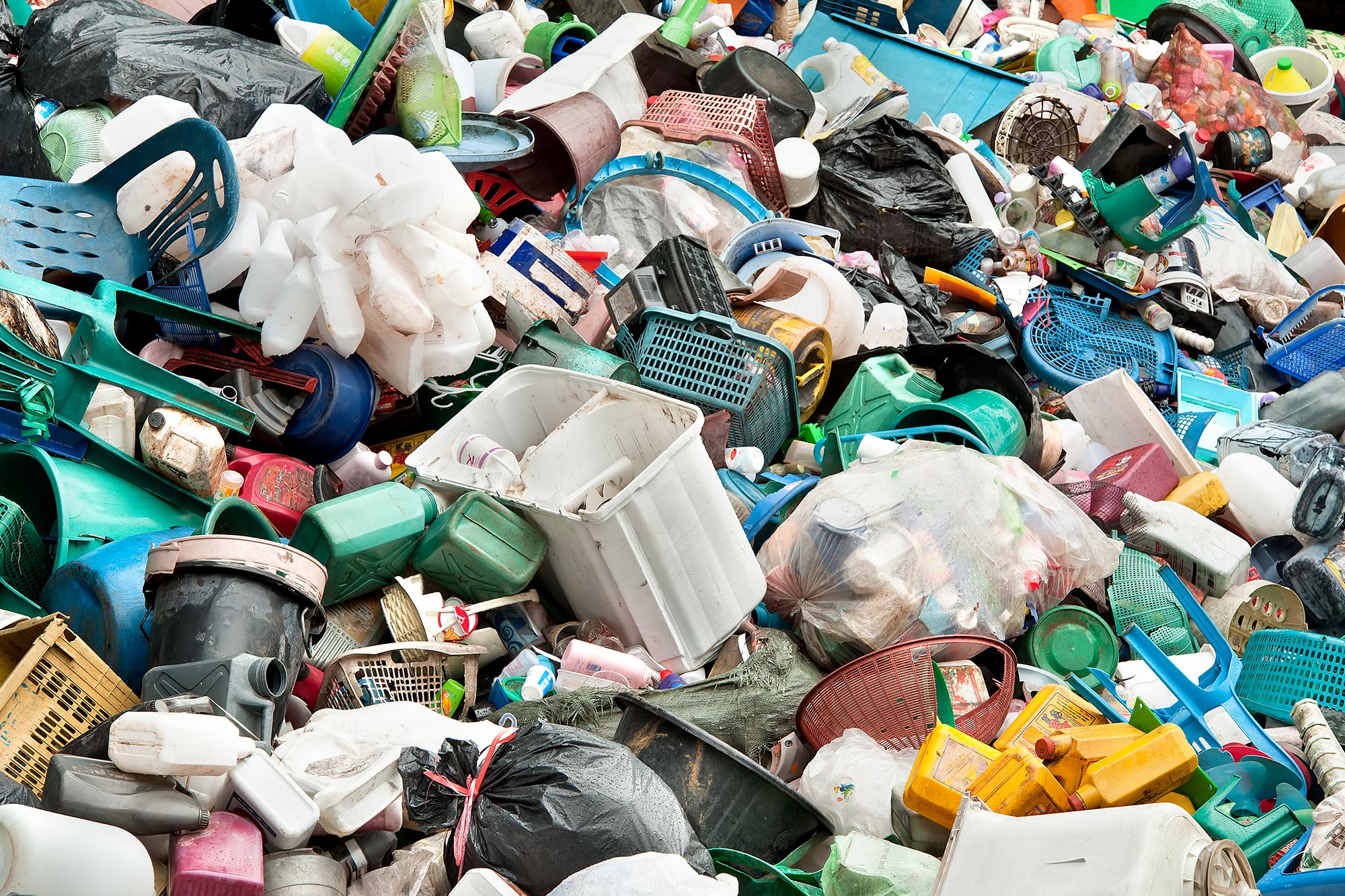

லெபிடோப்டிரான் கேலரியா மெல்லோனெல்லா புழு இனமானது அதன் உமிழ்நீரைப் பயன்படுத்துவதன் மூலம் பாலிஎதிலினை விரைவாக உடைக்க முடிகிறது.
ஒரு CSIC ஆராய்ச்சி குழு மெழுகு புழு உமிழ்நீரில் குறுகிய காலத்தில் பாலிஎதிலீன் சிதைவைத் தொடங்கக்கூடிய நொதிகள் இருப்பதாகக் கண்டறிந்தது.
மெழுகு புழு உமிழ்நீர் பிளாஸ்டிக்கை சிதைக்கிறது என்று CSIC ஆராய்ச்சி குழு கண்டறிந்துள்ளது. இந்த கண்டுபிடிப்பு பிளாஸ்டிக் கழிவுகளை சுத்திகரிக்கும் அல்லது மறுசுழற்சி செய்வதற்கு பல சாத்தியமான பயன்பாடுகளைக் கொண்டுள்ளது. லெபிடோப்டெரான் கேலரியா மெல்லோனெல்லா என்ற இந்த புழு வகை 2017 ஆம் ஆண்டில் பிளாஸ்டிக்கை (பாலிஎதிலீன்) சிதைக்கும் என்று குழு முதலில் கண்டுபிடித்தது. அதை எப்படி செய்கிறது என்பதை அவர்கள் இப்போது கண்டுபிடித்துள்ளனர்: அதன் உமிழ்நீரில் பாலிஎதிலினை விரைவாகத் தொடங்கக்கூடிய நொதிகள் (பீனால் ஆக்சிடேஸ் குடும்பம் சார்ந்தவை) உள்ளன. அறை வெப்பநிலையில் சிதைவு. ஆய்வுக்கு தலைமை தாங்கிய CIB-CSIC (உயிரியல் ஆராய்ச்சி மையம்) இன் CSIC ஆராய்ச்சியாளர் Federica Bertocchini, இந்த நொதிகள் தான் முன் சிகிச்சையின்றி பாலிஎதிலீன் பிளாஸ்டிக்கை உடைக்கும் திறன் கொண்ட முதல் மற்றும் இப்போது அறியப்பட்டவை என்று கூறுகிறார். . ஆய்வின் முடிவுகள் ஆன்லைனில் வெளியிடப்பட்டுள்ளன BioRxiv காப்பகமானது மதிப்பாய்வுக்காக காத்திருக்கிறது. ரோச்லிங் அறக்கட்டளை (ஜெர்மனி) ஆய்வின் நிதிக்கு பங்களித்தது.
“பிளாஸ்டிக் சிதைவதற்கு, ஆக்ஸிஜன் பாலிமரில் (பிளாஸ்டிக் மூலக்கூறு) ஊடுருவ வேண்டும். இது ஆக்சிஜனேற்றத்தின் முதல் படியாகும், இது பொதுவாக சூரிய ஒளி அல்லது அதிக வெப்பநிலையின் வெளிப்பாட்டின் விளைவாகும், மேலும் இது மிகவும் எதிர்ப்புத் திறன் கொண்ட பாலிமர்களில் ஒன்றான பாலிஎதிலீன் போன்ற பிளாஸ்டிக்குகளின் சிதைவைக் குறைக்கும் ஒரு இடையூறைக் குறிக்கிறது” என்று பெர்டோச்சினி விளக்குகிறார். “அதனால்தான், சாதாரண சுற்றுச்சூழல் நிலைமைகளின் கீழ், பிளாஸ்டிக் சிதைவதற்கு மாதங்கள் அல்லது ஆண்டுகள் கூட ஆகும்,” என்று அவர் மேலும் கூறுகிறார்.

மெழுகு புழு அதன் உமிழ்நீரில் உள்ள என்சைம்களால் பாலிஎதிலினை சிதைக்கிறது. கடன்: César Hernández Regal
“மெழுகுப் புழுவின் உமிழ்நீரில் உள்ள நொதிகள் இந்த முக்கியமான படியைச் செய்கின்றன என்பதை இப்போது நாங்கள் கண்டுபிடித்துள்ளோம்: அவை பிளாஸ்டிக்கை ஆக்ஸிஜனேற்றுகின்றன. இதன் பொருள் அவர்கள் பிளாஸ்டிக் சிதைவு செயல்பாட்டில் உள்ள சிக்கலைக் கடந்து அதன் சிதைவை துரிதப்படுத்த முடியும், ”என்று அவர் மேலும் கூறுகிறார்.
வலுவான மற்றும் அடிக்கடி பயன்படுத்தப்படும் பிளாஸ்டிக்குகளில் ஒன்று பாலிஎதிலீன் ஆகும். பாலிப்ரொப்பிலீனுடன் இணைந்தால் மொத்த பிளாஸ்டிக் உற்பத்தியில் 70% ஆகும்[{” attribute=””>polystyrene. Finding solutions to the plastic waste issue is urgent because plastic pollution endangers the health and environment of the world. The biological breakdown of plastics is one of the areas of study that has the most promise and potential. This process, known as biodegradation, involves microorganisms like bacteria and fungi. However, only a small number of microorganisms are known to be able to degrade the strong plastic polymers that make up polyethylene. Furthermore, in most situations, intensive pre-treatment is required to ensure oxidation and thus allow the microorganisms to have some (although gradual) effect on the plastic.
Plastic-eating worms
A few years ago, a new field of research opened up with the discovery that some insect species of the Lepidoptera and Coleoptera orders are able to degrade polyethylene and polystyrene. “In our lab, we discovered the insect that seems to be the fastest of all: the larvae of the lepidopteran Galleria mellonella, commonly known as the wax worm,” says Bertocchini. “These larvae are able to oxidize and break down the polymers in the plastic really quickly,” (after just one hour’s exposure).
“In recent years, efforts have been made to find out how these insects manage to do this. Numerous studies have focused on the microorganisms inhabiting the digestive system of these worms, based on the assumption that the worms can use plastic as food and that its degradation would be the result of their metabolic activity and digestive processes,” remarks the researcher. “But this assumption is highly questionable so, from the start, our research has focused on the worm’s oral cavity,” she explains.
“We have scrutinized the wax worm’s behavior when it comes into contact with polyethylene and found that the enzymes present in the worm’s saliva (i.e., the liquid inside the insect’s mouth) can degrade polyethylene,” Bertocchini tells us. “On coming into contact with saliva, the polymer oxidizes and depolymerizes within a few hours. We have identified degraded residues that form in the presence of the worm’s saliva,” she says.
Furthermore, the researchers analyzed the saliva using electron microscopy and observed a high protein content. “We have isolated two enzymes from the saliva that can reproduce the oxidation produced by the saliva as a whole,” explains the researcher. These two proteins, called Demetra and Ceres, belong to the family of phenol oxidase enzymes.
“We found that the Demetra enzyme had a significant effect on polyethylene, leaving marks (small craters) on the surface of the plastic, visible to the naked eye; this effect was also confirmed by the appearance of degradation products formed after exposure of the polyethylene to this enzyme. The Ceres enzyme oxidizes the polymer too, but does not leave visible marks, suggesting that the two enzymes have a different effect on polyethylene,” she sums up.
How phenol oxidase enzymes work
Phenols are molecules used by plants to defend themselves against potential enemies, such as insect larvae. Therefore, insects could produce phenol oxidase enzymes as a way to oxidize plant phenols, and thus neutralize them, meaning they could feed safely on the plants. Phenols are also present in many plastic additives, which could make them targets for these enzymes and create the necessary conditions for oxidation and depolymerization of the plastic. “So far, this is just speculation and further experiments will be needed to investigate the enzyme’s mechanisms of action in-depth,” researchers warn.
An even more interesting question is how wax worms have acquired this ability. Researchers speculate that it could be due to an evolutionary process. “Wax worms feed on hive wax and pollen from a wide variety of plant species. Considering that hive wax is full of phenols, this type of enzyme would be very useful to these bugs. Indirectly, this would explain why wax worms can break down polyethylene. However, so far this theory is only speculation and we must carry out more research combining insect biology with biotechnology.
Reference: “Wax worm saliva and the enzymes therein are the key to polyethylene degradation by Galleria mellonella” by A. Sanluis-Verdes, P. Colomer-Vidal, F. Rodríguez-Ventura, M. Bello-Villarino, M. Spinola-Amilibia, E. Ruiz-López, R. Illanes-Vicioso, P. Castroviejo, R. Aiese Cigliano, M. Montoya, P. Falabella, C. Pesquera, L. González-Legarreta, E. Arias-Palomo, M. Solà, T. Torroba, C.F. Arias and F. Bertocchini, 8 April 2022, BioRxiv.
DOI: 10.1101/2022.04.08.487620